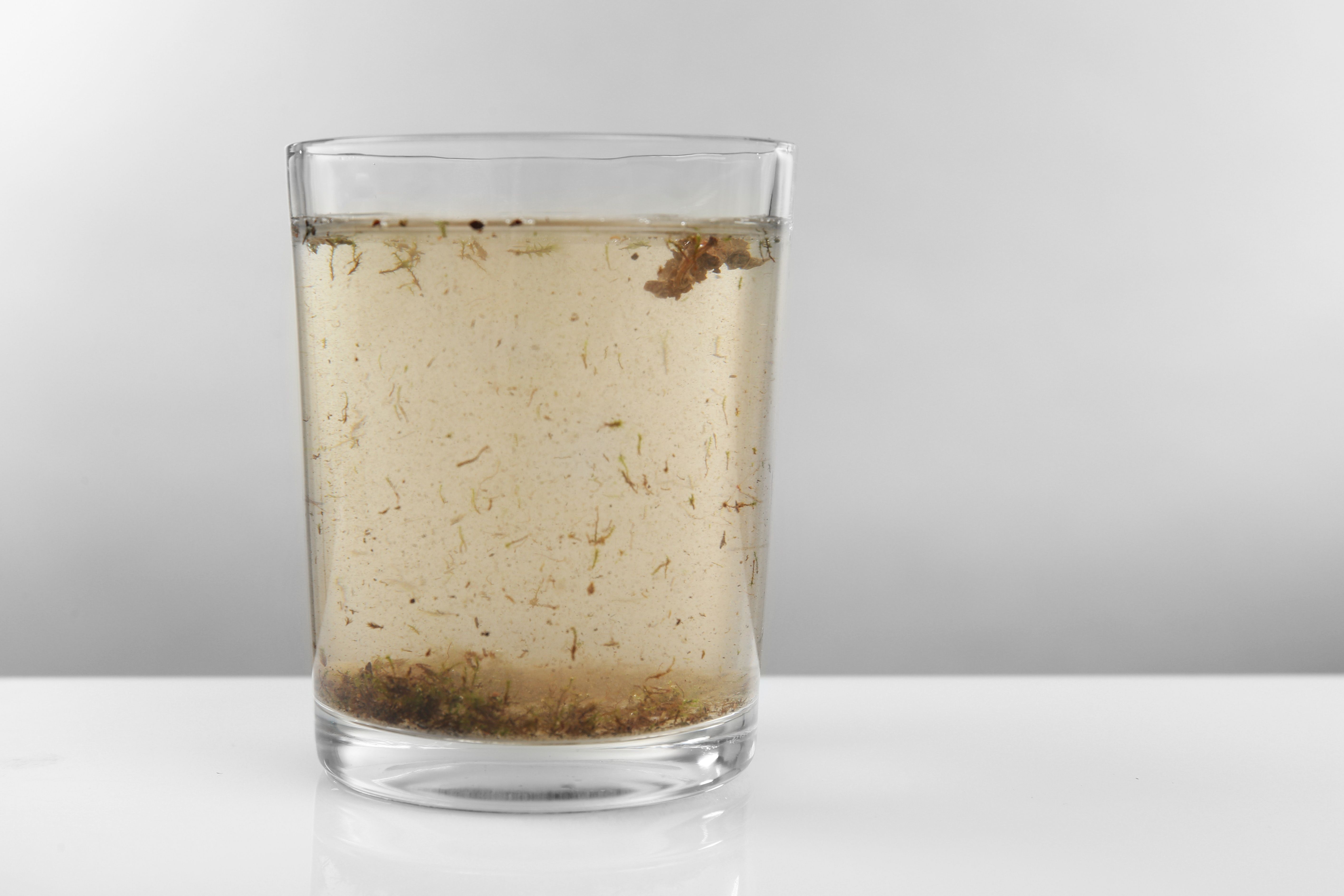Green Metrics for Analytical Methodologies Measured for Detecting Emerging Contaminants in Food and Water
Scientists from the Universiti Sains Malaysia in Penang, Malaysia; the University of Malaya in Kuala Lumpur, Malaysia; and Florida International University in Miami, Florida recently analyzed the benefits of using green metrics for detecting emerging contaminants (ECs) using analytical methods. Their research was published in TrAC Trends in Analytical Chemistry (1).
Glass of contaminated water on grey background | Image Credit: © Africa Studio - stock.adobe.com

Emerging contaminants (ECs), which are natural or synthetic substances or microbes that are not regularly monitored, can enter the environment in various ways, posing risks to human health in the process. The ECs in food and environmental water refer to compounds newly discovered in food and environmental water matrices. The potential effects of ECs in different products are not entirely understood, which necessitates improved identification and quantification technologies that ensure the quality and safety of the environment and food supply.
Analytical techniques, including chromatography, have led to various developments in food and water investigation practices. However, due to chemical and solvent consumption, these techniques can have negative environmental implications. It is becoming vital to use more sustainable analysis methods, with the scientists specifically referencing greenness metrics. The concept of greenness metrics is derived from green chemistry and offers researchers a qualitative and quantitative method for evaluating the environmental implications of analytical techniques. These metrics support sustainable analytical tool developments and food- and ecological water-based methodologies while assuring high analytical precision levels. Additionally, green chemistry seeds signify the presence of sustainable development awareness in analytical chemistry. For this study, the scientists provided a comprehensive outlook of chromatography approaches for detecting ECs in food and environmental water, specifically regarding greenness metrics in analytical methodologies.
From the perspective of scientists, green chemistry principles have been effectively incorporated into chromatographic method-based studies, such as reducing hazardous solvents and waste. When combining analytical performance and ecological factors, green metrics can provide valuable insights for sustainable approach-based developments. “The widespread use of highly sensitive and selective chromatography techniques enabled the precise identification of various ECs in food and environmental water,” the scientists wrote in the study (1).
Reference
(1) Hashim, N. M.; Waras, M. N.; Yahaya, N.; Raoov, M.; Kabir, A.; Zain, N. N. M. Green Metrics for Analytical Methodologies: Uncovering Sustainable Chromatography Approaches for Detecting Emerging Contaminants in Food and Environmental Water. TrAC Trends Analyt. Chem. 2024, 172, 117598. DOI: 10.1016/j.trac.2024.117598
Study Examines Impact of Zwitterionic Liquid Structures on Volatile Carboxylic Acid Separation in GC
March 28th 2025Iowa State University researchers evaluated imidazolium-based ZILs with sulfonate and triflimide anions to understand the influence of ZILs’ chemical structures on polar analyte separation.
Analytical Challenges in Measuring Migration from Food Contact Materials
November 2nd 2015Food contact materials contain low molecular weight additives and processing aids which can migrate into foods leading to trace levels of contamination. Food safety is ensured through regulations, comprising compositional controls and migration limits, which present a significant analytical challenge to the food industry to ensure compliance and demonstrate due diligence. Of the various analytical approaches, LC-MS/MS has proved to be an essential tool in monitoring migration of target compounds into foods, and more sophisticated approaches such as LC-high resolution MS (Orbitrap) are being increasingly used for untargeted analysis to monitor non-intentionally added substances. This podcast will provide an overview to this area, illustrated with various applications showing current approaches being employed.
Advances in Non-Targeted Analysis for PFAS in Environmental Matrices
March 27th 2025David Megson from Manchester Metropolitan University in Manchester, UK, spoke to LCGC International about the latest developments in non-targeted analysis (NTA) of per- and polyfluoroalkyl substances (PFAS) in environmental matrices based on a recent systematic review paper he has collaboratively published (1).
Study Explores Thin-Film Extraction of Biogenic Amines via HPLC-MS/MS
March 27th 2025Scientists from Tabriz University and the University of Tabriz explored cellulose acetate-UiO-66-COOH as an affordable coating sorbent for thin film extraction of biogenic amines from cheese and alcohol-free beverages using HPLC-MS/MS.
Quantifying Microplastics in Meconium Samples Using Pyrolysis–GC-MS
March 26th 2025Using pyrolysis-gas chromatography and mass spectrometry, scientists from Fudan University and the Putuo District Center for Disease Control and Prevention detected and quantified microplastics in newborn stool samples.






